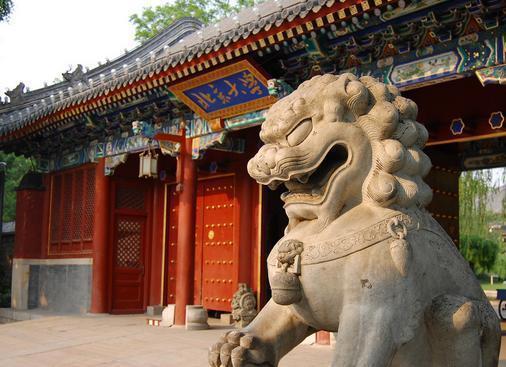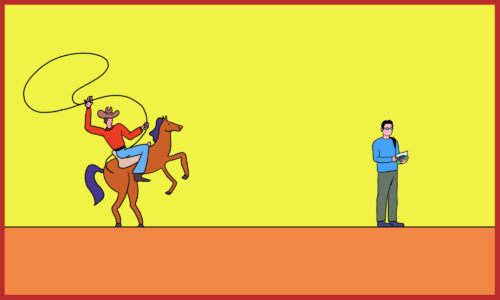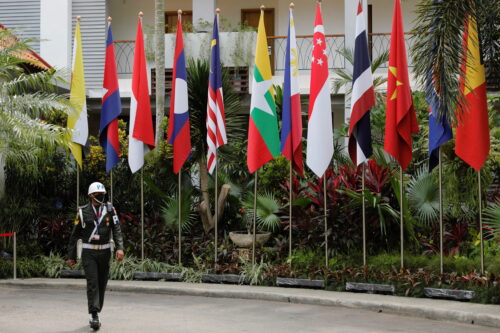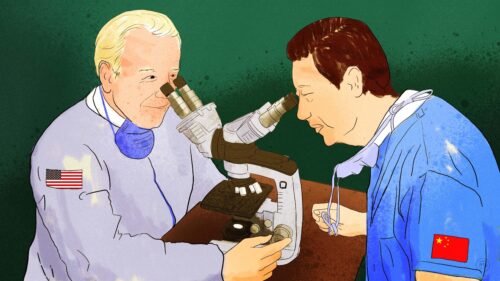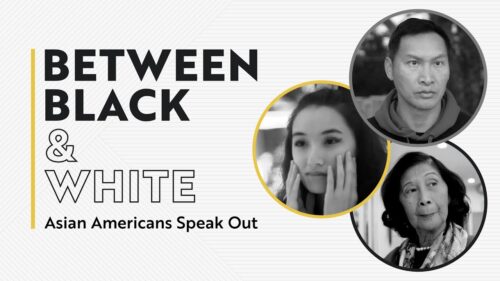The Highest Exam
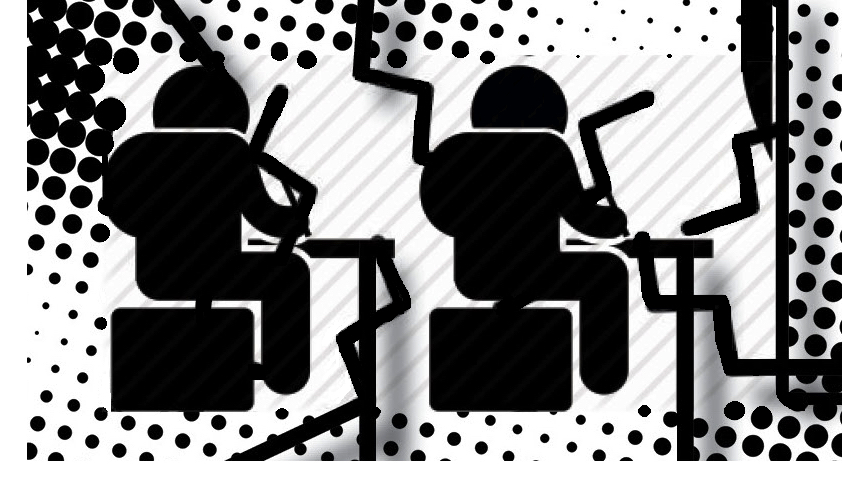
The gaokao is the most formidable test in the world. Literally “the high exam,” it is China’s National College Entrance Examination, taken every year by nearly 10 million students. It represents the best and worst of the country, inducing the most aspirational of dreams and deepest cycles of despair.
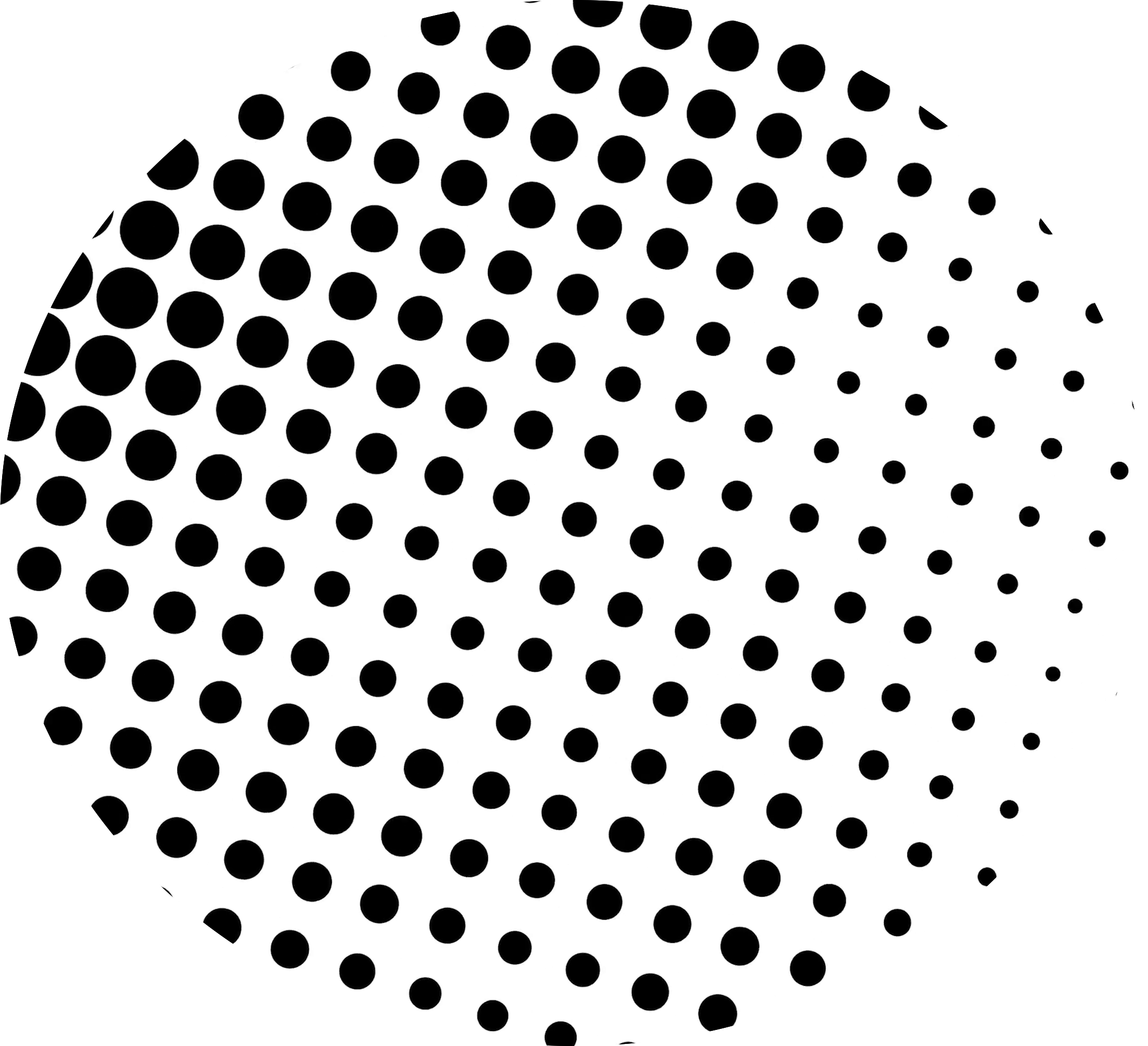
Peking University closed its gate on me.
Literally.
It was the summer of 2003. I had just finished middle school. At age 13, I traveled to Beijing for the first time to participate in an English public speaking competition hosted by China Central Television. My mother decided that we would stay an extra few days in the capital, cramming in as many tourist spots as possible. Topping her list of must-sees were the Gate of Heavenly Peace (Tiananmen), where “Chairman Mao declared the founding of the People’s Republic,” as my mother emphasized, the Old Summer Palace, whose relics after the destruction by British and French troops in 1860 symbolized China’s “century of humiliation,” and Peking University, the country’s preeminent institution of higher learning.
It was late in the afternoon when we arrived at the venerated red gate, one stone lion on each side. The sun was still bright in the sweltering July heat. On top of the facade adorned with imperial splendor, four golden Chinese characters in the handwriting of Mao Zedong read: 北京大学 — Běi Jīng Dà Xué, Peking University.
A young uniformed guard, not much older than me, stopped us by the entrance. Only members of the university and their guests were allowed inside, he said.
“We come from the University of Science and Technology of China (USTC),” my mother explained. Known as the Caltech of China, USTC was founded in Beijing in 1958 before being forced to move south to Anhui Province during the Cultural Revolution, where its academic prestige would be forever shadowed by the backwater location.
The guard shook his head.
“I am a teacher,” my mother pulled out her work ID. A single parent, she taught at the elementary school affiliated with USTC. Her profession is her forever pride and shame, the latter reinforced by the upper rungs in the academic hierarchy around her: professors, lecturers, high school teacher, middle school teacher. At least she did not teach kindergarten or work in a factory, my mother would often say, as her mother had done both.
“We are not hooligans,” my mother pleaded. “We came all the way here because my daughter would like to take a look at the campus of Peking University.”
Neither her credentials nor our sincerity could persuade the stone-faced guard. In an exasperated last attempt, my mother, who had never spoken positively of me, played her trump card: “Do you know how good my child’s grades are?”
The question was rhetorical, as my mother continued, “She just took the high school entrance exam, and her score was in the top five of the entire Anhui Province. Do you know how many people there are in Anhui?”
Sixty million, I thought to myself, as I stared at the young man’s expressionless face. The hallowed grounds inside the Harvard of China, at least on that day under his watch, would remain forbidden to outsiders.
As she pulled me away, my mother spoke in my ear but loud enough for everyone around us to hear, “Wait till you take the gaokao. Then you come back and open that gate with your grades!”
Gāokǎo 高考 — “the high exam” — is the world’s most fearsome standardized test. Each year starting on the seventh of June, millions of high school graduates across China sit inside intensely monitored classrooms and pour everything they’ve learned over 12 years into a handful of subject tests: Chinese, math, English, plus the sciences or the humanities. After two or, in some areas, three days, it’s all over. With few exceptions, a three-digit score, the sum of all subject test results, is the sole criteria to determine a student’s entrance to a university and, in the minds of many, their future.
The gulfs in development between different parts of China are reflected in, and in turn aggravated by, their resources for education. The gaokao is administered at the provincial or equivalent level. A student from Beijing, Shanghai, or Tianjin is several times more likely to go to college compared with their inland peers. In Anhui, among the half-million examinees every year, just over one-tenth gain admission in the first round to a four-year school (Tier 1), less than 0.1% qualify for USTC, and only the top few dozen scorers have a shot at Peking University.
I never went back to the crimson gate with golden characters. I studied at USTC, and came to the United States for graduate school. It’s easy to overstate the significance of one exam. Yet I am a product of gaokao, it having shaped my education, my career, my life inside China, and my path out of it.
The highest exam represents the best and worst of China, inducing the most aspirational of dreams and deepest cycles of despair. In the land of scarcity and inequality, the kool-aid of meritocracy is the only beverage offered when everyone is thirsty.
I spent more than a decade chasing the tip of a statistical tail, terrified of being swallowed up by the crowd and crushed under its weight. My story with gaokao is not one of triumph, but of survival.
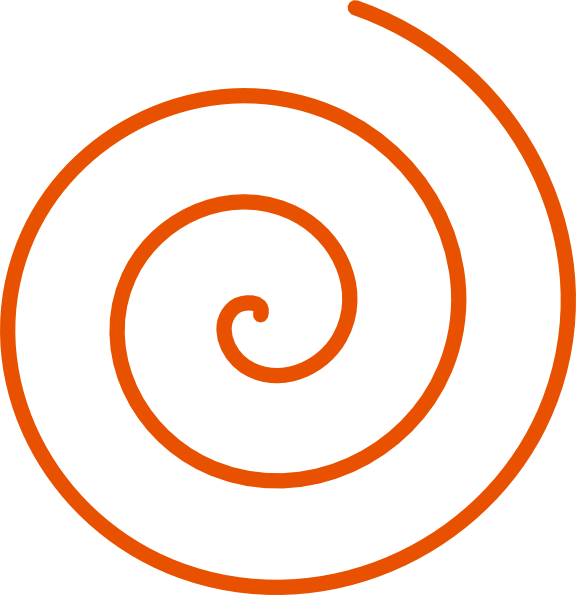
I remember the first time I noticed calluses on my hand, in the middle of my right thumb, on the side of the first joint in the middle finger and the tip of the right index. It was the mid-1990s, I was in second grade. My best friend and I examined our tiny palms together, tracing the hints of hardened elevation. We shared the exciting discovery with our teacher, who happened to be my mother. In one of her subsequent classes, the woman who gave me life told a roomful of six- and seven-year-olds the story of a young Chinese revolutionary who hid in the countryside during World War II. When captured by the enemy, she pretended to be illiterate, as most Chinese women of her time were, but the shape of her hand gave her away.
Of the countless tales of red martyrs I had learned from the government-mandated “patriotic education,” that of the anonymous young woman stayed with me. She had calluses like mine. The physical mark of literacy was a status symbol. The hand that holds a pen may be spared from manual labor.
Over millennia, the aspiring Chinese literati — all men — sat for the imperial exam, kējǔ 科举, penning eight-legged essays and vying for employment with the court. Keju was abolished in 1905, six years before the fall of the last emperor. When the Communist government initiated gaokao in 1952, the subject areas were a far cry from the ancient texts, and it no longer excluded women, but the custom of using a national exam to select talent continued. Suspended during the Cultural Revolution and reinstated in 1977, gaokao went through various reforms over the decades, but not much has changed in essence. Like keju, gaokao skews in favor of the well-off with means to prepare. Nevertheless, for the less privileged in a vastly unequal society, excelling in a standardized test remains the surest, if not the only, pathway for individual advancement.
For the less privileged in a vastly unequal society, excelling in a standardized test remains the surest, if not the only, pathway for individual advancement.
Starting in the Tang Dynasty, the best performer in the highest level of the imperial exam was called zhuàngyuán 状元, literally “the name on the top of the chart.” For the next 13 centuries, some 700 men would claim that enviable title, the moniker gracing bridges and temples in their hometowns and passed down to this day. In the modern incarnation of keju, the top scorer from a province or municipality becomes zhuangyuan. Local newspapers run features of them each year, sometimes on the front page.
My mother read the profiles of zhuangyuan religiously, repeating the highlights to me. When we moved into a bigger apartment, she designated the south-facing room as my study, and began gluing the inspirational clippings to its walls, adding a couple more each year. Instead of cartoon figures or pop idols, I grew up with the names and faces of gaokao champions to look up to.
Always the teacher, my mother told me stories of her colleagues’ children, the ones much older than me: I had never met them, but they existed in my consciousness by their gaokao performance, usually exemplary, occasionally a cautionary tale. “My grades were very good!” my mother often recounted about her own days in school. “I only missed the cut-off to the No. 1 High School (the best high school in the city) by two points.”
The oldest of three children and the only daughter, my mother never went to university, though both of her brothers did. Instead of a regular high school, she attended a teaching academy, whose graduates could immediately join the workforce. “Had I taken the gaokao, I would have done very well,” my mother said. “But your grandmother did not let me.”

Who gets to go to university in China? Among the 3,000 institutions that admit high school graduates, many of which newly-founded private establishments or recently-upgraded associate colleges, only 800 are certified to issue undergraduate diplomas. A little more than 300 universities are categorized as Tier 1 and operate under the jurisdiction of national or provincial education ministries. Most places have increased enrollment, but rapid enlargement of the student body also risks compromising the quality of education. There aren’t enough schools for everyone, let alone reputable ones.
Learning the unforgiving statistic was a cruel revelation. It was the first year of middle school. After a period exam, we were ranked by the combined score on all subjects. Getting into the top 10 in a class of 50 was considered an achievement, their names announced at the class conference.
Returning home, I told my mother the 10 names I had memorized, nine classmates and myself at the top.
“Most of them will not get into university,” my mother said, not impressed. “Just because you ranked first does not mean you are safe.”
In the early 2000s, about half of middle school graduates in China passed the high school entrance exam. Combined with the gaokao acceptance rate, if my middle school class reflected the regional average, two, at most three, of us could advance to a Tier 1 university, leaving the remaining four dozen behind. My mother was right.
My stomach was in knots when I walked into the classroom the next day, seeing all the familiar faces. Where would each of us be in six years’ time? Even if I maintained my spot at the top of the school, which I did, hundreds of thousands of my peers elsewhere in the province also served as competition.
To maximize my chances, life outside of schoolwork was kept to a minimum. No TV. No after-school time with friends. No leisure reading. One of the few creative outlets I found was penning love letters, some ghostwritten for classmates, some for historical figures that caught my fancy, and the rest addressed to a boy in my class, never sent. In our final year of middle school, my first real-life crush moved back to his hometown in the far north. China’s residential policy dictates that one take the gaokao where one’s household is registered. For my young self, the draconian rule led to one afternoon of tears and months of sorrow. For the children of 300 million migrant workers, the geographical caste system demanded a choice between staying behind in the countryside, alone or with aging relatives, or following their parents to the cities but giving up on the dream of college.
In an authoritarian state where massive social engineering had been carried out with force and efficiency, the government’s calls to “reduce the burden” of primary and secondary school students have always been met with near-universal resistance.
The provincial capital of Hefei where I grew up is surrounded by some of the poorest counties in China. Had I been conceived a few miles off, I might have been married off young, denied further education, or never born at all. Each time we walked past panhandlers in the city streets, or urban slums behind the major hospitals, my mother would be quick to remind me of my privileges. With a roof over my head and food on the table, what excuses did I have not to study?
I never took a break, not even for Lunar New Year. A teacher once suggested in class that studying till the clock struck midnight meant an auspicious start to another year of academic progress. Every New Year’s Eve since, I would seat myself in my study, working away at problem sets. The typically mute TV would be on in the living room, tuned to China Central Television’s annual Spring Festival Gala. My mother would call me a few times during the evening, to come watch a funny skit for a comedic break or to go downstairs and light firecrackers when it was a few minutes to twelve.
A rare outing during my final months of middle school was for a cousin’s first birthday celebration. In Chinese tradition, the child was presented with 12 everyday objects to pick from at random. The choice would be interpreted as an indication of her future profession. As we waited for the important ritual to begin, my mother complimented the teenage daughter of a distant relative: “She is very pretty!”
“What good is that?” her father sighed. “She is not made of academic material. She could only go to vocational school.”
The items were laid out and the baby readied. “Choose the book!” her parents encouraged from the sidelines, eager for an early sign of scholarship.
The one-year-old reached for the 100 yuan ($15) bill.
“She will be rich!” the crowd laughed. Her parents were not satisfied. “The book! The book!”
The event went on until the book was picked up. The child would grow up to do well in school, at least it was the hope.

After the high school entrance exam, I was admitted to Hefei No. 1 High School, a century-old academy that had denied my mother decades earlier. “One foot in the gate of college!” neighbors congratulated me.
The top 40 students across the province were recruited into the school’s experimental program, designed for the National Science Olympiads. The competitions were divided into five categories, math, physics, chemistry, biology, and computer science. The first-prize winners in any category could gain direct admission to one of the handful best universities in China.
I did not own a computer and did not like chemistry. I loved physics, which became my primary focus in the Olympiads. I also loved literature. Most high school students in China have the option to choose between the sciences and the humanities after their first year, which will also determine the subject test in their gaokao. For us in the experimental class, the choice was made upon entry. It hardly felt like a loss: studies of the humanities had to be “politically correct,” while the sciences could be pursued without compromise, and offered more opportunities after graduation. Other than the few truly passionate about and gifted with words, the humanities was viewed as the lesser choice by many. “Study well math, physics, and chemistry, and you can walk around the world unafraid,” so the saying went.
To prepare for both the specialized competitions and gaokao, the latter remaining the center of gravity, every day at high school started with morning reading at 7:30 and classes ending at 8:40 in the evening, with homework taking us well past midnight, never quite finished. We were athletes, our minds tuned like machines.
It is easy to point out flaws with standardized testing, but much more difficult to find a feasible alternative.
Always careful about what I ate, my mother took extra care in my diet. She would go to the wet market early on weekend mornings seeking out the freshest farm eggs. Unlike their factory counterparts, my mother’s hard-sought products were supposedly from chicken free of growth hormones and more nutritious, hence several times pricier. Every day, my breakfast would include two hard-boiled farm eggs, while my mother ate factory eggs herself. “Fuel for your brain,” she said.
One morning during the reading session, the head teacher came over to my desk and said, “I think you can be sheng zhuangyuan,” the provincial champion in gaokao.
I chuckled and pointed to the boy seated behind me. “If anyone, it would be M!”
M looked up from his books and shook his head. “Of course it would be Yangyang.”
Our teacher smiled and reaffirmed his confidence in me. “I think Yangyang has a better shot.”
Long before we met in person at high school, I had known of M as the legendary best student at the best middle school across town. Somehow he had heard of me as well. For almost every exam in high school, we occupied the top two spots in combined score. We both trained for the Physics Olympiad. In the classroom seating assignment, we found our designated desks next to each other, most certainly not by accident. For all the months M sat behind me, we barely spoke to each other.
USTC runs a specialized undergraduate program called “the Class for the Gifted Young.” For high school students aged 15 or below, if they qualify for USTC after gaokao, 40 are selected each year through a second round of exams. Having started elementary school early, I met the age requirement if I skipped the third and last year of high school.
In the final weeks of my second year, I sat in the upper class to take mock tests of the gaokao. I did remarkably well. In youthful arrogance, I thought I could still aim for zhuangyuan, even with one fewer year of preparation.
In professional sports, it is not uncommon for a participant to break a record in training before bombing in the real competition. In gaokao, fear of a poor performance can become a self-fulfilling curse. Many girls take the pill so that their menstrual cycle doesn’t fall on the fateful two days, but there is no universal vaccination against sudden illness or mental distress.
I recall little from my two days at gaokao, because I was a nervous wreck. Writing on the problem sheets felt more like an exercise of muscle memory. After turning in the exam, I walked out to find my mother outside the test site, her petite figure among thousands of equally anxious parents. I told her I had failed. “You still have next year!” she said.
When the results were announced, I was nowhere near zhuangyuan level, but did well enough to advance into the second round for the gifted young program. After written tests in math, physics, and English, my combined score came in first place. Holding the admission notice from USTC, I wondered if going to a university with an exclusive focus on science and engineering was the best choice. But sitting through gaokao once more was unimaginable. I said goodbye to my classmates and sold my test prep books in the courtyard of our high school. Spared from another year of grilling, did I miss a rite of passage in life? How stupid was I to even ask the question, when blessed with such good fortune?
The following year, M won a medal in the Physics Olympiad and went to Peking University, one of many success stories from my high school class.

“Do you think, because I am poor, obscure, plain, and little, I am soulless and heartless?” Jane Eyre said to Mr. Rochester in Charlotte Bronte’s classic novel. “I am not talking to you now through the medium of custom, conventionalities, nor even of mortal flesh,” the heroine continued. “It is my spirit that addresses your spirit; just as if both had passed through the grave, and we stood at God’s feet, equal — as we are!”
In gaokao, it is my score that addresses your score. Having passed through all the ills of Chinese society, our lives, in that brief moment of three-digit abstraction, stand equal.
Or at least one may believe so. In a country where structural inequality is woven into its fabric and accepted by many as fate, where seeking backdoors and cutting corners are normal, the college entrance exam is one of the few entities perceived as incorruptible. Cheating is a criminal offense. A few years ago, the president of a distinguished university admitted his son, whose gaokao score did not meet its lowest requirement. Revelation of the scandal ignited a public fury. The child had to drop out.
“You may think they are not fair. But once you leave school, you will realize that exams are fairer than life.”
A former teacher of mine hailed from rural China and obtained postgraduate degrees through night `school while working full-time. We were among his last students in Hefei, before he moved to Beijing for law school. “Exams cannot measure everything,” he once told us. “You may think they are not fair. But once you leave school, you will realize that exams are fairer than life.”
It is easy to point out flaws with standardized testing, but much more difficult to find a feasible alternative. In the year 2000, prompted by a few high-profile cases of stress-induced student violence, then Chinese leader Jiang Zemin gave a major speech advocating for a reorientation from test scores to “comprehensive quality.” The Ministry of Education issued guidelines on school hours, exam frequency, and the acceptable amount of homework.
In an authoritarian state where massive social engineering had been carried out with force and efficiency, the government’s call to “reduce the burden” of primary and secondary school students was met with near-universal resistance. Two decades after the initial effort, the stagnant campaign has started anew with a 30-point plan seeking to correct the same issues — and facing similar objection.
When employment for people without an undergraduate degree is limited, and labor conditions remain poor, access to the few opportunities that higher education provides is inevitably competitive. “China is caught in a prisoner’s dilemma,” said Yong Zhao, a professor of education at the University of Oregon, in an interview with the New York Times. Any metric beyond standardized testing requires more resources, and is more prone to manipulation. Without addressing the underlying problems in economic development and social mobility, many well-intentioned attempts at educational reform have only magnified the disparity. When public schools were forced to reduce hours, the cottage industry of private tutoring bloomed, its benefits exclusive to the ones who could afford it.
In recent years, many Chinese families with the financial means have placed their hope overseas. Getting into a good foreign university is no easy task, but it presents a much favored alternative to the reality in China. Hundreds of thousands of Chinese students go abroad for college, a staggering figure on its own, but a tiny fraction compared with the 10 million who take gaokao each year.
One late spring evening in my senior year at USTC, my mother and I were on a train back to Hefei. I had just applied for my student visa at the U.S. consulate in Shanghai, an offer letter from the University of Chicago in hand. Visa approvals often require proof of financial ability. Admission to a Ph.D. program in the sciences, which guarantees a stipend in addition to a full-tuition merit scholarship, was — for myself and many with empty bank accounts — the only ticket out of China. The top scorers at gaokao years prior would once again compete among ourselves and with the rest of the world for a smattering of spots. At least this time it was no longer determined by a single exam.
We ran into an old friend of my mother’s on the train whose child was preparing for undergraduate studies in America. “Look at your daughter,” the woman said to my mother. “She can get out (of China) with her grades. We could only do it with our money.”
Are grades more noble than money? A drop in the bucket compared with overseas tuition, application for graduate school in the U.S. is nevertheless an expensive process, costing hundreds if not thousands of dollars. At the start of my senior year, my undergraduate research supervisor called me into his office and offered to loan me 10,000 yuan ($1,500) to cover the fees.
I had never asked for it, and said I did not need it.
“Don’t be shy,” he insisted, “it is your future on the line. When you get to the U.S., you can pay me back in no time.”
I did not accept his generous offer, because my mother took out her life’s savings. It was only after I had arrived on the other side of the Pacific that I learned she also borrowed from her co-workers.
For everything I gave up and my mother sacrificed in the hopes of an extra point in a test, was it worth it?
Among the yellowed pages taped to my childhood room, there were inspiring tales of young men and women who rose from dire poverty to succeed in gaokao, proving the myth of meritocracy. But overwhelmingly, the zhuangyuan were people like myself, who did not have much, but had enough to not be burdened by the basic needs of survival. I dreamed fantastical dreams, and pursued realistic ambitions. I worked hard, but so did everyone else. For everything I gave up and my mother sacrificed in the hopes of an extra point in a test, was it worth it?
When I was in middle school, a new test item was added to the high school entrance exam: physical education, evaluated through sprint, long jump, and shotput. However hard I tried, I was average in the first two, and dismal in the third. The physical test was scrapped last-minute due to the SARS epidemic, and I was spared the disadvantage to my grades. I have little sense of pitch, and cannot carry a tune. Had China decided whom to go to university based on sporting or musical talent, I would have failed miserably. Is the ability to solve problems of trigonometry or Newtonian mechanics more valuable? What determines value, and who deserves an education?
We draw a lottery at birth and are dealt with life’s whimsical hand. We are all just trying to play the best as we can.

A recent work trip brought me to California, where I had an ad hoc mini-reunion with my high school classmates, most of whom I had not seen for over a decade. Some half a dozen of us sat in a Chinese restaurant, sipping hot tea and marveling at the size of our congregation.
We had all taken the journey from Anhui to an elite Chinese university, and then graduate school in the U.S. We all earned Ph.D.’s, the final stop in a formal education. Some of us stayed in academia. The rest joined the private sector. One had just gotten back from his wedding. Another was a new father. School was out, and life had just begun.
“Do you remember what you wrote in my high school yearbook?” I asked the boy seated next to me. He studied engineering, and was working at a tech firm.
“No?” He looked genuinely baffled.
“So long as my life is better than yours — that was how you bid me farewell.”
Everyone burst into laughter.
M was the last to arrive. When I stood up to shake his hand, a few at the table cheered and clapped, as if we were old rivals stepping back into the ring. He looked the same as in my recollection, if not for a thinning hairline.
“Damn, it’s been so long.”
We pressed our palms to the bones.

Yangyang Cheng and the Science and China Column will return on the final Wednesday of every month. Last month:
